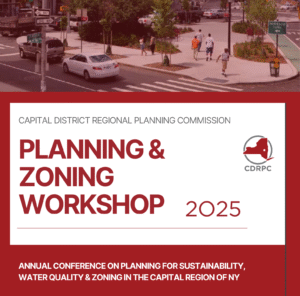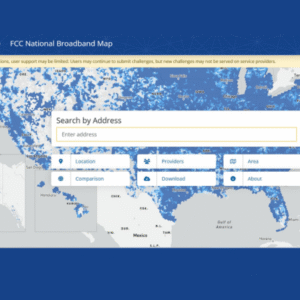87% of Communities in the Capital Region Experienced Growth Between 2023 and 2024
The US Census Bureau recently released its Vintage 2024 estimates, providing updated population data for towns, cities, villages, and counties, as well as, housing unit estimates at the county level, covering the period from 2020 to 2024.
Key Takeaways from the 2024 Census Population Estimates
Please note: When a locality name includes the word ‘Balance’, it refers to the portion of the town excluding any villages within its boundaries. If ‘Balance’ is not part of the name, the population estimate includes the town and any incorporated villages.
Top 5 Communities by Numeric Growth (2023-2024):
- The Town of Guilderland experienced the largest numeric increase in the Capital Region, growing by +726 residents (2.0%). While the Village of Altamont, which is within the Town of Guilderland, grew by only +4 residents, not contributing significantly to the town’s overall growth.
- The City of Schenectady saw an increase of +713 (1.0%), the highest numeric growth among cities in the Capital Region.
- The Town of Ballston added +425 residents (3.4%). In contrast Ballston Spa Village grew by just +1 person, suggesting most growth occurred outside the village.
- Town of Colonie grew by +408 (0.5%) residents.
- Town of Rotterdam added +378 (1.2%) residents, which is the top growing town in Schenectady County.
Additional Noteworthy Insights:
- Village growth is not a major driver of population change in most towns. In nearly every case, the towns’ population increases occurred outside of the villages.
- The Village of Scotia is the top growing village in the Capital Region, growing by +80 (1.1%) residents between 2023 and 2024.
- At the county level, Albany County had the largest numeric growth, adding +1,964 people, followed closely by Schenectady County with a growth of +1,883 people between 2023 and 2024.
- In terms of growth rate, Schenectady County led the Capital Region with a 1.2% increase between 2023 and 2024. Albany, Saratoga, and Rensselaer Counties each grew by 0.6% over the same period.
Areas with No Growth or Decline:
Interestingly, all of the locations that saw no growth or population decline between 2023 and 2024 are in Saratoga County. These include:
- Town of Galway
- Town of Day
- South Glens Falls Village
- Galway Village
- Waterford Village
- Town of Hadley
- Corinth Village
- Ballston Spa Village
- City of Mechanicville
- Town of Waterford
Saratoga County as a whole did not lose population, indicating that other areas within the county are continuing to grow. This suggests growth is becoming more concentrated in certain parts of the county, which may be more attractive to people, for example, housing availability, proximity to employment centers, and school districts.
Housing Unit Counts at the County Level
The US Census 2024 estimates for housing units show continued growth across many counties in New York State between 2023 and 2024, with the largest numeric increases occurring in the state’s most populated areas. With the top five being Kings County (11,980), Bronx County (9,158), Queens County (5,606), New York County (3,881), and Orange County (1,360). Counties.
Most Capital Region Counties fell within the upper half of New York State counties for numeric housing growth between 2023 and 2024.
- Saratoga County ranked 12th out of 63 counties, adding 817 housing units.
- Albany County followed closely, ranking 14th with an increase of 548 units.
- Rensselaer County ranked 21st, adding 243 units.
In contrast, Schenectady County ranked 53rd, with only 51 new housing units added, placing it in the lower half of numeric unit growth for New York State. What is particularly interesting is that Schenectady County is experiencing the fastest population growth rate in the Capital Region (1.2% between 2023 and 2024). It also leads the region in annual home value appreciation, with an average yearly increase of 4.4% in single-family home prices and the lowest median sale price in 2024 of $266,000. These patterns suggest that, given limited new construction in Schenectady County, the appreciation is likely being driven by investment in existing homes, particularly in older more affordable housing stock.
Albany’s housing unit growth rate of 0.4% reflects a moderate growth in housing units relative to peer communities across the country. While it outpaced Buffalo’s 0.2% growth, it lagged behind Baton Rouge (0.9%), Hartford (0.5%), and notably Des Moines (1.5%). This suggests that while housing development is occurring, Albany-Schenectady-Troy MSA is growing at a slower pace than some comparable regions.


